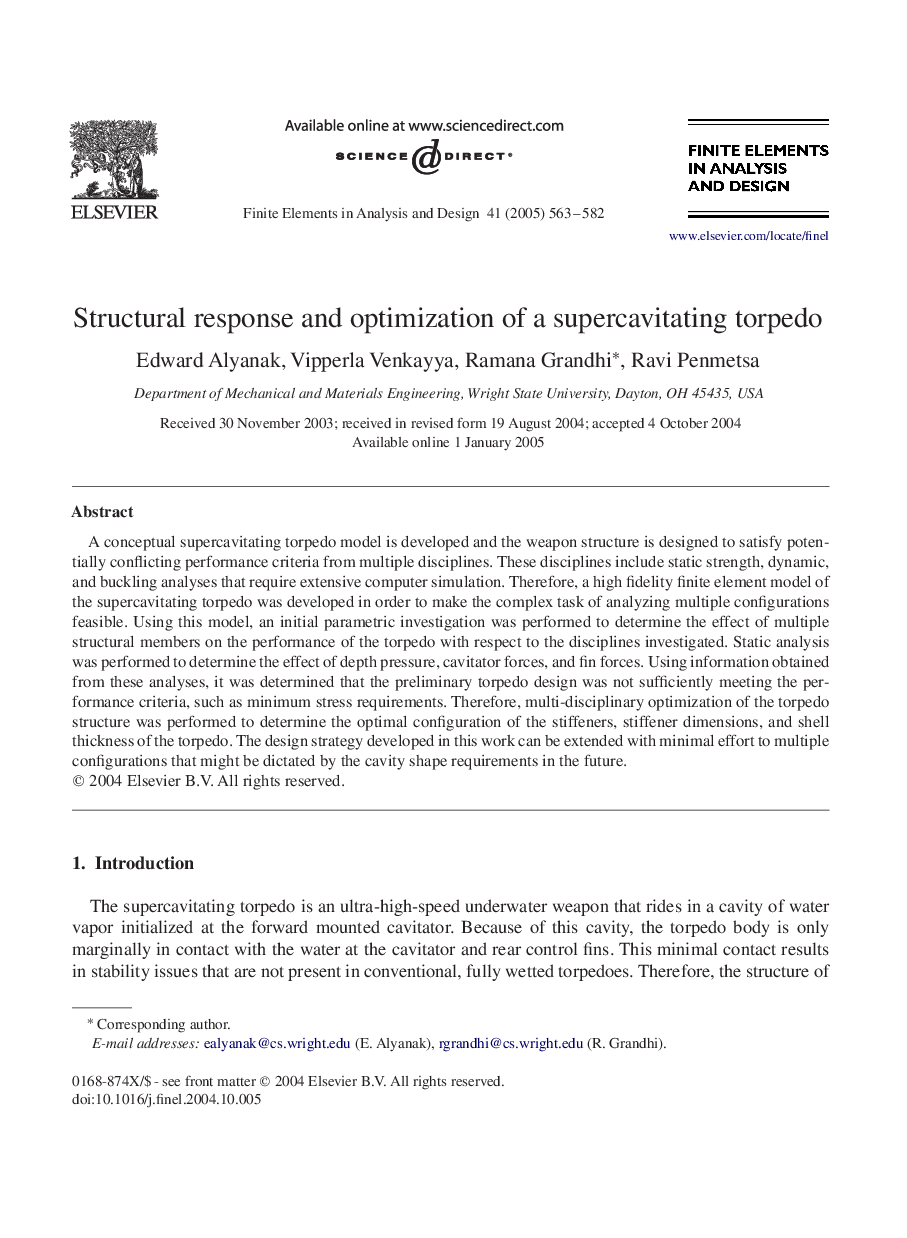| Article ID | Journal | Published Year | Pages | File Type |
|---|---|---|---|---|
| 10354812 | Finite Elements in Analysis and Design | 2005 | 20 Pages |
Abstract
A conceptual supercavitating torpedo model is developed and the weapon structure is designed to satisfy potentially conflicting performance criteria from multiple disciplines. These disciplines include static strength, dynamic, and buckling analyses that require extensive computer simulation. Therefore, a high fidelity finite element model of the supercavitating torpedo was developed in order to make the complex task of analyzing multiple configurations feasible. Using this model, an initial parametric investigation was performed to determine the effect of multiple structural members on the performance of the torpedo with respect to the disciplines investigated. Static analysis was performed to determine the effect of depth pressure, cavitator forces, and fin forces. Using information obtained from these analyses, it was determined that the preliminary torpedo design was not sufficiently meeting the performance criteria, such as minimum stress requirements. Therefore, multi-disciplinary optimization of the torpedo structure was performed to determine the optimal configuration of the stiffeners, stiffener dimensions, and shell thickness of the torpedo. The design strategy developed in this work can be extended with minimal effort to multiple configurations that might be dictated by the cavity shape requirements in the future.
Related Topics
Physical Sciences and Engineering
Computer Science
Computer Science Applications
Authors
Edward Alyanak, Vipperla Venkayya, Ramana Grandhi, Ravi Penmetsa,
